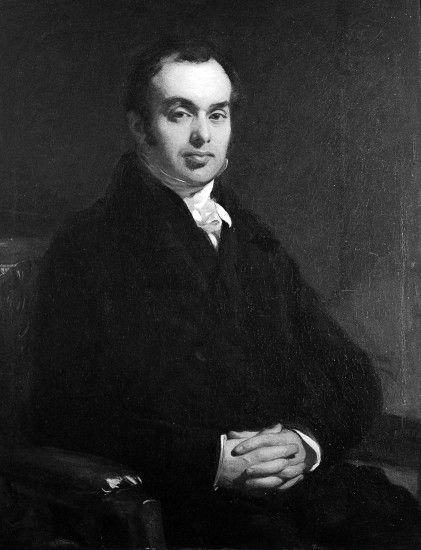Scurvy Outbreak in Crediton Workhouse 1847
An important event occurred at the regular fortnightly meeting of the Governors of Crediton Poor Law Union on 22 November 1845.
They discussed a letter from the Poor Law Commissioners in London saying they were prepared to approve changes to the inmates’ diet on account of the shortage of potatoes resulting from that year’s crop failure due to Potato Blight.
The inmates’ weekly food allowance had been as follows:
Bread
Cooked meat
Soup
Broth
Cheese
Potatoes etc.
Suet or rice pudding
Man
102 oz.
12 oz.
3 pints
4 ½ pints
8 oz.
4 ½ lbs
14 oz.
Woman
85 oz.
12 oz.
3 pints
4 ½ pints
8 oz.
4 ½ lbs
14 oz.
The Governors now recommended that bread be substituted for potatoes with the soup supplied for midday dinner on Mondays, Wednesdays and Fridays; and that boiled rice be given with meat on Sundays, Tuesdays and Thursdays, when potatoes were not obtainable between about a shilling and a shilling and tuppence for 20 pounds.
Two years later, in 1847, there was an outbreak of scurvy in Britain. Until that time scurvy was a rare disease, which was almost entirely restricted to prisoners on poor diets and sailors on long voyages. It was already known that vegetables and fresh fruit, particularly lemons, helped prevent it. (In 1780 1,457 patients with scurvy had been admitted into Haslar Naval Hospital. The Admiralty introduced lemon juice into the nautical diet in 1795, instantly virtually eradicating the disease within the Royal Navy.)
Dr Thomas Shapter wrote an article describing the clinical features and dietary habits of 15 patients with scurvy that he had attended at the Exeter Dispensary that year. Titled “On the Recent Occurrence of Scurvy in Exeter and the Neighbourhood” it was published in the Provincial Medical and Surgical Journal (June 1847 p 281) - the forerunner of the British Medical Journal.
He wrote:
“I shall merely … refer to some cases which fell beneath my observation in the Crediton Union Workhouse. In March last, and for some short time previously, much debility and sickness had prevailed amongst the inmates. The sallow countenance and pale anaemic gum could be discovered, both amongst the males and females, while in many of the latter, the gum assumed the decided spongy, swollen, red character.” Affected patients often had bruises and swollen painful joints.

Thomas Shapter MD (1809-1902) Portrait in Royal Devon and Exeter Hospital
He attested to the good quality of the normal weekly “dietary” of the inmates of the workhouse.
He pointed out that throughout the previous 12 months, apart from July and August, the same weight of boiled rice had been substituted for the potatoes which were in short supply. (As it happens, 4 ½ lbs (2 Kg) of potatoes per week contain roughly the daily recommended allowance of vitamin C.)
He observed “that in the Crediton Union, there intervened between the last use of potatoes and the prevalence of the disorder referred to, a period of about six months, and experience has shown this to be the usual time a diet devoid of fresh acescent [sour] principles takes to produce scurvy.” This is because the body normally has a store of vitamin C.
The potato crop of 1847 was not affected and thereafter scurvy once again mainly only affected sailors whose diets lacked sufficient fresh fruit and vegetables.
His description of his second case is typical of a patient suffering from scurvy:
Female, aged 36, stout, countenance naturally florid, but now a look of sallowness, has been ailing upwards of a month; feels generally weak; is listless and indisposed to exertion ; complains much of pains across the loins; breath foetid, short; feels faint occasionally; pulse small; petechiae on both legs; appetite good; tongue clean; bowels regular; gums red and spongy. Has lived chiefly on bread, but of this has had sufficient.
The book “A System of Practical Medicine: Comprised in a Series of Original Dissertations (Volume 5)” (1840) by Edinburgh doctor Alexander Tweedie (1794-1884) contains articles from three authors with Devonshire connections. Link to e-book
Thomas Shapter wrote about Scrofula – tuberculosis of the skin – and two of the sons of Samuel Budd, surgeon of North Tawton (who looked after the poor of Bow until 1827), also contributed articles.
William Budd (who described the 1839 Typhoid epidemic around North Tawton) wrote about rheumatic diseases.
His older brother George Budd, Professor of Medicine at King’s College Hospital in London, wrote a chapter about scurvy. He correctly predicted that the disease was caused by the "…lack of an essential element which it is hardly too sanguine to state will be discovered by organic chemistry or the experiments of physiologists in a not too distant future" – although it was almost 100 years before Vitamin C was identified as Ascorbic Acid.
It was Shapter however who drew attention to the importance of potatoes in the diet to prevent the disease.

Professor George Budd MD FRS (1808-1882)
by Peter Selley
